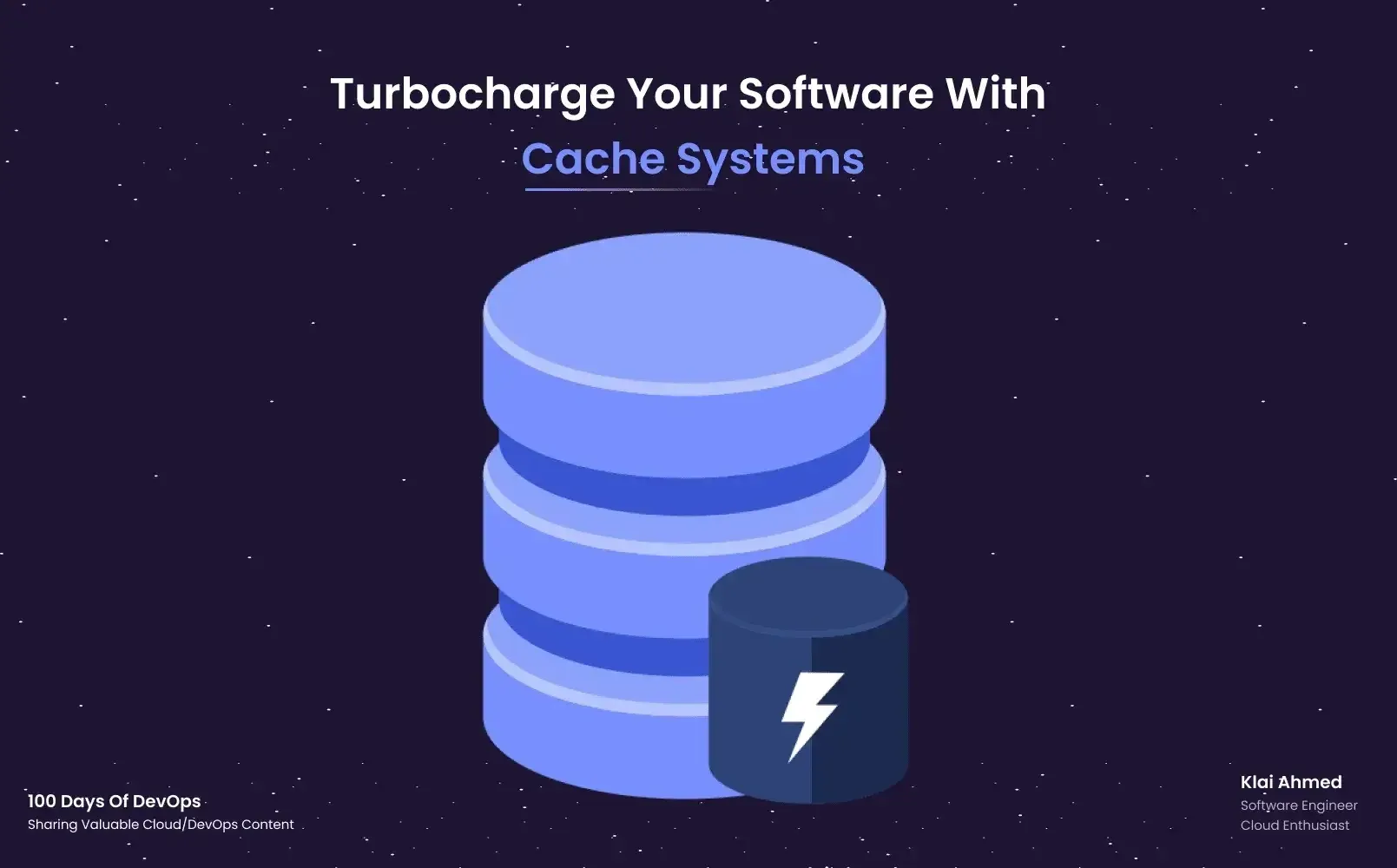Turbocharge Your Software: The Ultimate Guide to Building a Lightning-Fast Caching System!

As a developer, I always love to make an analogy between software architecture and real-life stories. So let’s say my son asked me: "What is the result of multiplying 125 by 22?" It will take me some seconds before I got the right one, and that’s our normal request to the server, then after some minutes my little daughter comes to me and says: "Papa, what is the result of multiplying 125 by 22?" In this case, I will directly answer because I still remember it from earlier. Now my daughter is impressed by my mathematics skills and that’s what caching basically is. But as we know, the human brain is much more complex and powerful, so let’s try to talk more about the caching concept in software design systems which can help alleviate these issues and provide a better user experience.
In this guide, we will walk you through the process of building a caching system from scratch. We will cover everything from the basics of caching to advanced techniques that will turbocharge your software. Let's go!
What is Caching?
Caching is an essential tool for delivering a great user experience. It can make your application faster and more responsive, which can lead to increased user satisfaction and engagement. This is why you should definitely consider adding this particular system design to your mobile app or website.
Types of Caching
Let's take a closer look at the two different types of caching.

In-Memory Caching
In-memory caches can be implemented using data structures such as hash tables or arrays. This type of caching is a powerful tool for improving application performance. It can be used to store frequently accessed data in memory, which can greatly reduce the time it takes to retrieve that data.
Distributed Caching
Redis is a popular distributed caching system that supports advanced features such as data replication and clustering. Distributed caching allows you to store larger amounts of data in memory, which can greatly improve the performance of your application. By distributing the cache across multiple servers, you can also achieve better fault tolerance and availability.
Implementing Caching Systems
There are many caching frameworks and libraries available that can help you quickly implement a fitting system design concept in your application. Some popular caching options include Memcached, Redis, and Hazelcast.
Caching Frameworks and Libraries
Caching frameworks and libraries can greatly simplify the process of implementing a caching system. They provide pre-built components and functionality that can help you get up and running quickly.
Integrating Caching Into Your Application Architecture
To get the most out of your system design, you should integrate it into your application architecture. This involves identifying the parts of your application that can benefit from caching and designing your system to take advantage of caching.
Integrating caching into your application architecture requires careful planning and consideration. You need to identify the parts of your application that can benefit from caching and ensure that your caching system is integrated with your application in a way that is efficient and effective.

Caching Patterns
Here we will show you some caching patterns in detail with examples.
Cache-Aside Pattern
const cache = new Map<string, string>();
async function getData(key: string): Promise<string> {
let data = cache.get(key);
if (!data) {
data = await fetchData(key);
cache.set(key, data);
}
return data;
}
In this example, we're using a simple Map object as our cache. The getData function first checks the cache for the requested data using the cache.get method. If the data is not in the cache, it is fetched from an external source using the fetchData function and then added to the cache using the cache.set method.
Read-Through Pattern
class DataCache {
private readonly cache = new Map<string, string>();
async getData(key: string): Promise<string> {
let data = this.cache.get(key);
if (!data) {
data = await fetchData(key);
this.cache.set(key, data);
}
return data;
}
}
const cache = new DataCache();
async function getSomeData(): Promise<void> {
const data = await cache.getData("some-key");
// Use the data
}
In this example, we've encapsulated the cache in a separate class called DataCache. The getData method of this class works in the same way as the previous example, but it's now part of a reusable cache implementation that can be used throughout the application.
Write-Through Pattern
class DataCache {
private readonly cache = new Map<string, string>();
async writeData(key: string, value: string): Promise<void> {
this.cache.set(key, value);
await writeDataToExternalSource(key, value);
}
}
const cache = new DataCache();
async function saveSomeData(key: string, value: string): Promise<void> {
await cache.writeData(key, value);
// Continue with the application logic
}
In this example, we're using the DataCache class again, but this time we've added a new method called writeData. This method first updates the cache using the cache.set method, and then writes the data to an external source using the writeDataToExternalSource function.
Cache-Invalidation Pattern
const cache = new Map<string, { data: string, expiry: number }>();
async function getData(key: string): Promise<string> {
const cachedData = cache.get(key);
if (cachedData && cachedData.expiry > Date.now()) {
return cachedData.data;
}
const data = await fetchData(key);
cache.set(key, { data, expiry: Date.now() + 60000 }); // Cache data for 60 seconds
return data;
}
In this example, we've added an expiration time to the cache by storing an additional expiry property along with the data. The getData function now checks the expiry property to see if the data in the cache is still valid. If the data is expired, it is removed from the cache and fetched from the external source again. If the data is still valid, it is returned from the cache without needing to fetch it again.
Optimizing Your Caching System
Alright, after some theory stuff and examples, the real question is: How can I optimize my caching system? We will answer that right now.
Cache Sizing and Tuning
To optimize your caching system, you should carefully consider the size of your cache and tune its settings to fit your specific use case. This involves monitoring your cache usage and adjusting your settings as needed.
Cache sizing and tuning is an ongoing process that requires careful monitoring and adjustment. By tuning your cache settings, you can ensure that your cache remains efficient and effective over time.
Cache Consistency
Cache consistency is the process of ensuring that cached data is up-to-date with the source data. This can be achieved using techniques such as cache invalidation and data replication.
Cache consistency is important for ensuring that your application remains responsive and accurate. By ensuring that your cached data is up-to-date, you can prevent errors and ensure that your application provides a great user experience.
So what are you waiting for? Let's turbocharge your software!

